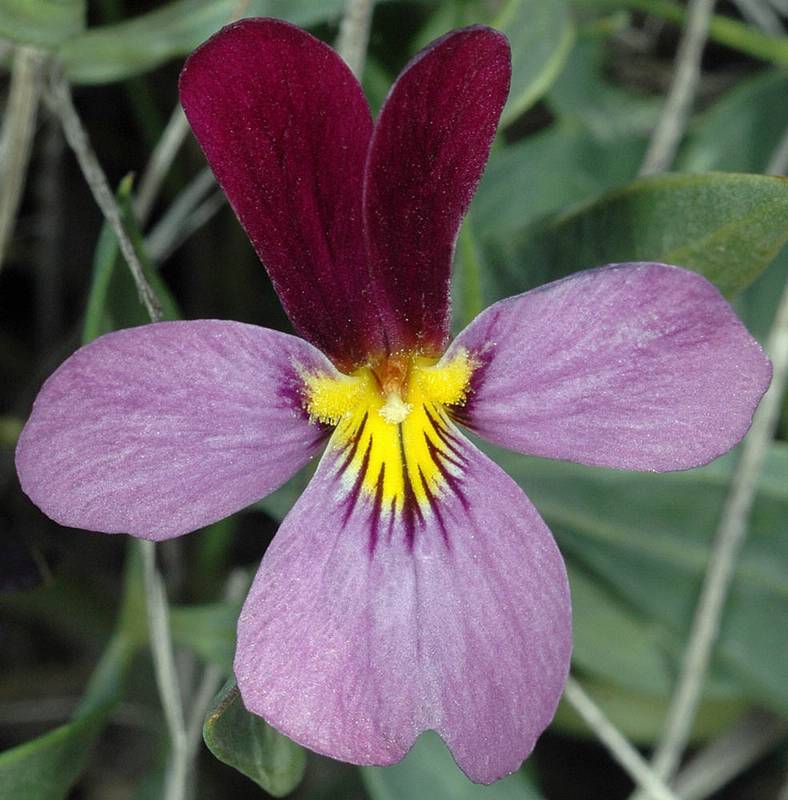Viola trinervata
desert pansy, 3-nerved violet, sagebrush violet
Leaf blades palmately lobed or compound, the main segments once or twice dissected, the ultimate segments narrowly elliptic, 1.5-4 cm. long;
leaves leathery, prominently 3-nerved on the lower surface;
petioles longer than the blades.
Peduncles exceeding the leaves;
flowers about 1.5 cm. long, usually bicolored, the upper pair deep reddish-violet, the lower 3 pale to deep lilac, with yellowish or whitish base and purple penciling, occasionally all white or all deep purple;
style head hairy.
Fruit a 3-valved capsule, ovary superior, placentation parietal.
Viola trinervata
Occurring east of the Cascades crest in Washington; north-central Washington to southeastern Oregon.


